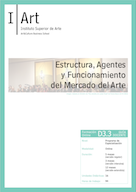Did Rembrandt invent the selfie
The Dutch master may have painted the greatest self-portraits of all time. But these works were also prophetic of the social media age. Alastair Sooke explains.
When social historians come to define the turn of the 21st Century in the future, how will they characterise our era? My bet is that the times we live in will be known as the ‘Age of Narcissism’. Think about how people incessantly use social media, plastering the internet with casual snaps that document their lives in obsessive detail. The phenomenon of the selfie is now so widespread that Oxford Dictionaries selected the term as the ‘word of 2013’. (According to their definition, a selfie is “a photograph that one has taken of oneself, typically with a smartphone or webcam and uploaded to a social media website”).
I have been reflecting on this recently because in London, where I live, the art season is getting underway – and one of its biggest exhibitions will be the National Gallery’s Rembrandt: The Late Works, which opens on 15 October. And more than any other artist before or since, Rembrandt van Rijn (1606-69) knew a thing or two about selfies.
One of the constants of his up-and-down career was a fascination with self-portraits. Over four decades he made around 80 of them in various media, including paintings, drawings and prints, transforming the genre in the process. Estimates differ, but this represents up to 20% of his entire oeuvre. As a result, many museum visitors even today can identify his plain yet distinctive features. That bulbous nose could only belong to one painter in the history of art.
Scholars generally divide Rembrandt’s self-portraits into three phases. There are the lively and experimental images that he created as a young artist on the make. In these he explores effects of light as well as bizarre grimaces and facial expressions. Often he appears with a shock of chaotic, tangled hair that could be a visual symbol of his fertile creativity.
Next come the self-portraits of the 1630s and ’40s, when he appears in middle age, wearing expensive clothes such as fur-trimmed velvet coats. In these pictures, which are perhaps less pioneering than those that came before or after, Rembrandt presents himself with dignity while showing off the trappings of prosperity, reflecting the commercial success he was enjoying in Amsterdam.
Finally, after a gap of around seven years when he refrained from the practice, there are the 15 or so self-portraits of his late years, beginning in 1652. For many people, these are among the greatest artworks that Rembrandt ever produced. Gone are the gold chains and richly embroidered shirts. Instead the artist depicts himself with rugged simplicity and honesty. As a result, these images seem to suggest a refreshing, and strikingly modern, interest in introspection.
Self-promotion
“In a way, the self-portraits are what make Rembrandt famous rather than his art”, says the art historian James Hall, whose book The Self-Portrait: A Cultural History was published this year. “His early self-portrait prints are sent all over the place, so everyone would have known what he looked like even if they’d never seen another work by Rembrandt. As an independent artist, not a court artist, he had to make more of an effort to put himself on the map. Making a self-portrait suggests that you are already famous even if you’re not”.
For Betsy Wieseman, curator of the National Gallery’s exhibition, which will feature six self-portraits, the combination of unflinching scrutiny and swashbuckling technique make Rembrandt’s self-portraiture particularly memorable.
“When you think about making a portrait of yourself, not just picking up your mobile phone and snapping a photo, but how you work paint and create texture”, she explains, “you have to look very closely and understand all the lumps, bumps, wrinkles and saggy bits on your face. Rembrandt was willing to look that closely and record those imperfections, and that honesty is just amazing. So is the variety of brushwork that he invents to do that. He might make a broad swipe in one area to suggest the little bag of flesh under his eye, and then have these scribbly-scrabbly bits that are very loose and give a sense of jowls. It’s extraordinary how many different ways he finds to apply paint to give life and texture to his own face”.
One of the highlights of the National Gallery exhibition will be Rembrandt’s Self-Portrait With Two Circles (circa 1665), on loan from Kenwood House in north London. Wearing a white linen cap, described with nothing but a few quick, vigorous strokes, and holding brushes, a palette and a painter’s maulstick, Rembrandt stands in front of an easel visible at the right edge of the painting, which in places appears unfinished. His face seems battered by what fate has thrown his way: bankruptcy, the early death of his first wife, Saskia, a vicious lawsuit brought against him by his former mistress (and his son’s nursemaid). Yet his stare remains indomitable, while the dark forms of his body suggest a solid, immovable presence.
“The Kenwood self-portrait has got to be the best self-portrait and maybe even the best portrait that has ever been painted”, says Hall. “Rembrandt stands there almost challenging us. You sense determination – we’re not going to get past him easily. It’s all autumnal oranges and reds – it almost looks as though it’s mouldering. The sheer size of it is also impressive. What’s so moving and powerful about Rembrandt is that sense of his own dignity and selfhood”.
Behind him, on the wall in the background, are the curving lines of a pair of mysterious circles. Nobody really knows what Rembrandt meant by including these shapes, and over the years they have generated all sorts of theories. Perhaps they are two hemispheres from an imposing world map. Maybe they are cabbalistic symbols.
Yet for Wieseman, who has sifted through the competing interpretations, the circles most likely refer to a story about the Florentine painter Giotto, who could supposedly draw a perfect circle freehand, using just a single, continuous line.
“Rembrandt has gone out of his way to top that”, she explains, “because he has not one but two circles. So he is showing that he can be better even than Giotto”.
The fact that Rembrandt wanted to engage in one-upmanship with Giotto is fascinating. His implied boast isn’t as brazen as the self-aggrandisement that we often find in today’s selfies, but it suggests that even great artists aren’t immune from showing off. That said, there is a world of difference between a fleeting selfie and one of Rembrandt’s magnificent self-portraits. As Wieseman says, “The thing to remember about Rembrandt’s self-portraits is that they’re not just images of the artist: they are Rembrandts. In other words, they are fantastic paintings”.
En la imagen: Rembrandt's Self-Portrait as a Young Man, 1628-29 (Stan Honda/AFP/Getty Images).
Fuente : BBC (Alastair Sooke, art critic of The Daily Telegraph): Did Rembrandt invent the selfie...




